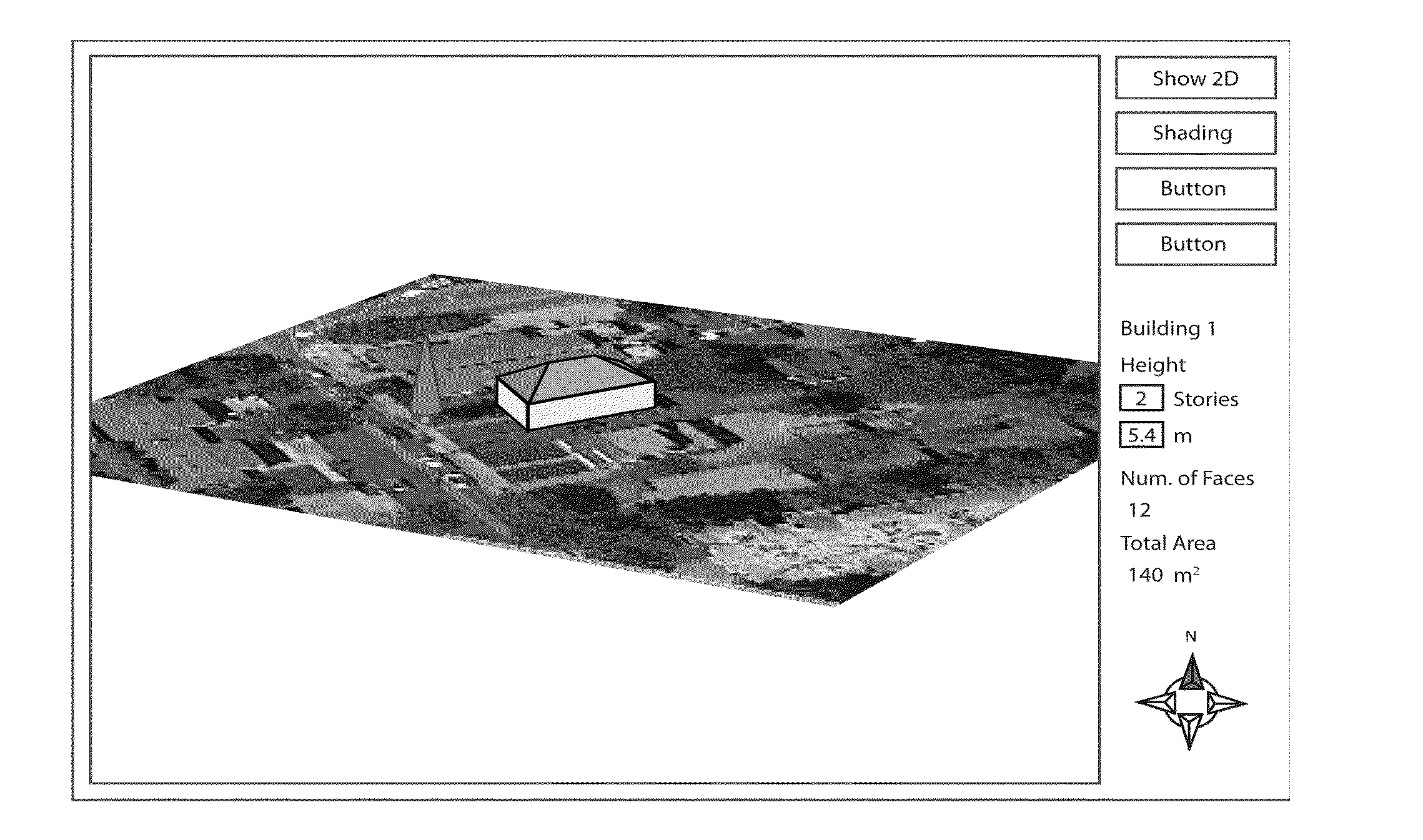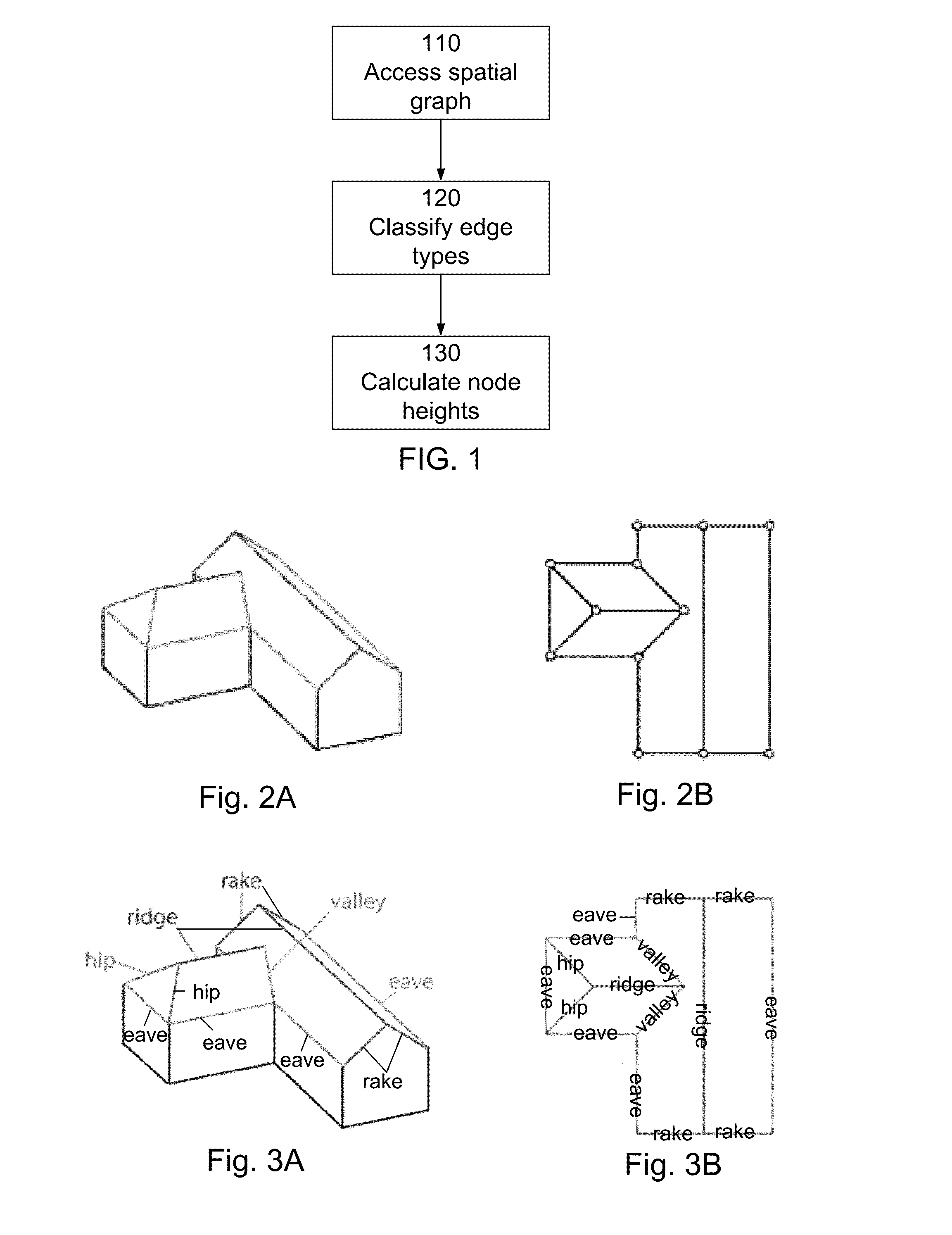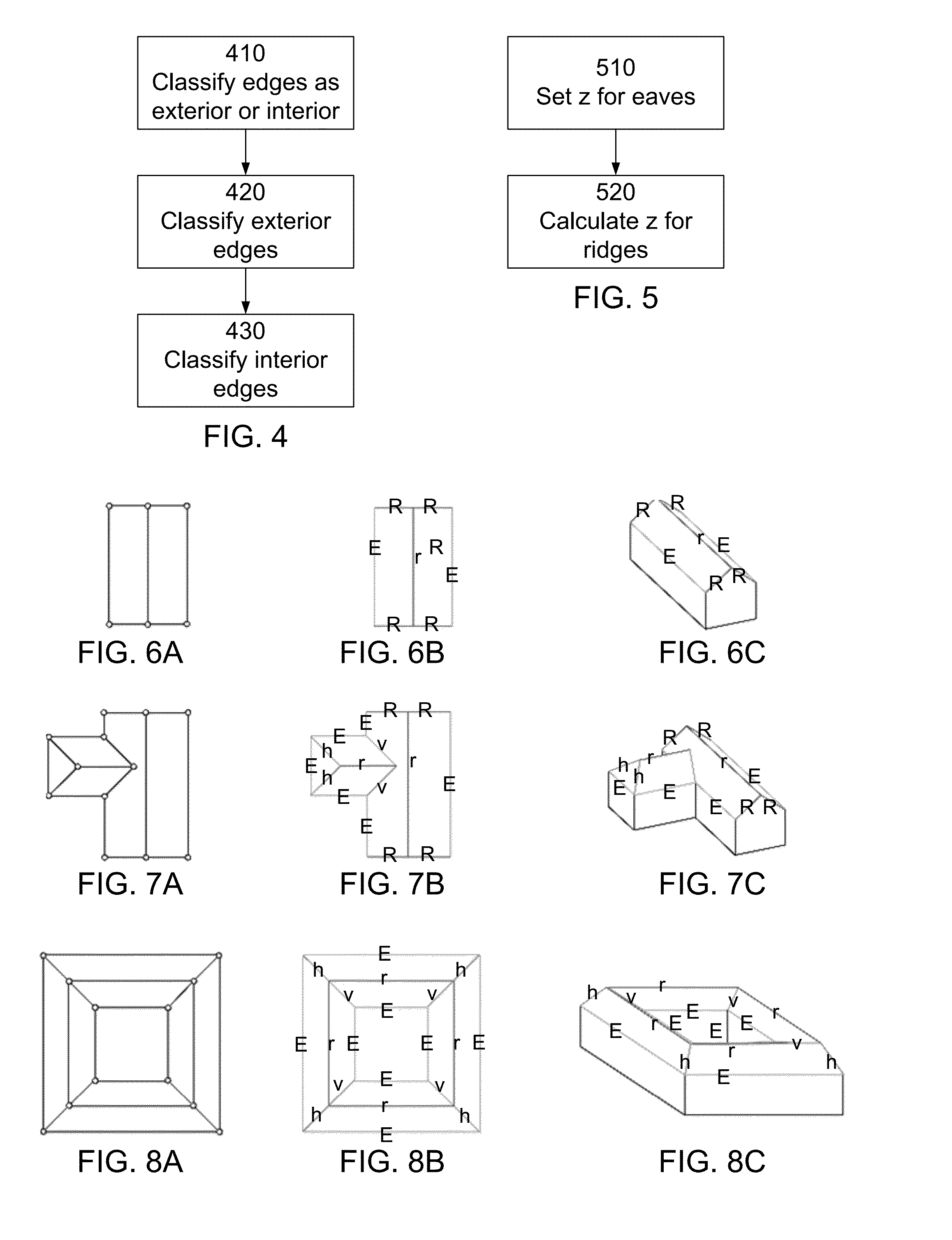Estimation of Three-Dimensional Models of Roofs from Spatial Two-Dimensional Graphs
a spatial two-dimensional graph and three-dimensional model technology, applied in the direction of instruments, geometric cad, computing, etc., can solve the problems of limited scope and application, and current solutions usually do not fully represent the three-dimensional structure of buildings
- Summary
- Abstract
- Description
- Claims
- Application Information
AI Technical Summary
Benefits of technology
Problems solved by technology
Method used
Image
Examples
Embodiment Construction
[0021]One aspect is the creation of estimates of three-dimensional building structures, such as roofs, based on two-dimensional graphs of the structures. These graphs could be user defined or the output of an image recognition algorithm (such as edge detection). In one implementation, in order to simplify the creation of a graph by the user for a given building, an interface is provided in which the user can create this graph as an overlay on a satellite image of the building.
[0022]FIG. 1 is a flow diagram of an example method for constructing three-dimensional models of a roof. The three-dimensional model is constructed by accessing 110 a two-dimensional spatial graph of the roof. The two dimensional graph is a representation of the top view of the roof. It is a projection of the roof onto the x-y plane, i.e., collapsing the height (z) coordinate. The (spatial) graph includes nodes and edges connecting these nodes. Each edge of the spatial graph represents a physical edge of the ro...
PUM
 Login to View More
Login to View More Abstract
Description
Claims
Application Information
 Login to View More
Login to View More - R&D
- Intellectual Property
- Life Sciences
- Materials
- Tech Scout
- Unparalleled Data Quality
- Higher Quality Content
- 60% Fewer Hallucinations
Browse by: Latest US Patents, China's latest patents, Technical Efficacy Thesaurus, Application Domain, Technology Topic, Popular Technical Reports.
© 2025 PatSnap. All rights reserved.Legal|Privacy policy|Modern Slavery Act Transparency Statement|Sitemap|About US| Contact US: help@patsnap.com



